Greetings
Radiation therapy is a minimally invasive treatment that can be used on an outpatient basis for patients ranging from children to the very elderly. In particular, new technologies, such as intensity-modulated radiation therapy (IMRT), have been developed in recent years to target tumors precisely. This has resulted in increased cure rates and fewer side effects. However, the most important thing is not the machine, but the heart. Our department aims to provide unbiased treatment for a wide range of diseases, primarily malignant tumors, based on the latest domestic and international knowledge. While many patients may feel anxious about their first treatment, please rest assured that our staff, including nurses who provide meticulous care alongside our radiation oncologists, radiation therapy technicians who are directly responsible for treatment, medical physicists who are involved in overall quality control, medical secretaries who assist with consultations, and receptionists, are all professionals who strive to ensure that patients receive the best possible treatment in a comfortable environment.
Director of the Department of Radiation Oncology
Akitomo Sugawara
Radiation Therapy Information
At our hospital, all of our staff, including nurses who provide detailed care together with radiation oncologists, radiological technologists who are directly in charge of treatment, medical physicists who are involved in overall quality control, medical secretaries who assist with treatment, and reception staff, are dedicated professionals who strive to ensure that patients receive the best possible treatment in a comfortable environment.
*Linked to YouTube.
Treatment details
A unique feature of radiation therapy is its ability to destroy only the cancer while sparing the surrounding normal tissue. Recently, stereotactic radiation therapy (SRT), which delivers pinpoint radiation to a localized area, and intensity-modulated radiation therapy (IMRT), which delivers radiation that conforms perfectly to the shape of the tumor, have further minimized damage to normal tissue, allowing for increased doses to the tumor and thereby increasing cure rates. Radiation therapy has been shown to achieve therapeutic effects equivalent to surgery in many areas. Depending on the type and stage of cancer, it may be beneficial to combine it with chemotherapy or surgery. Radiation therapy can generally be performed on an outpatient basis alone. Because it is less physically demanding, even elderly patients can receive it with peace of mind. Radiation therapy is not widely used in Japan, with only about one-quarter of all cancer patients receiving it. However, in Europe and the United States, more than 60% receive it, and this trend is expected to increase in Japan in the future. We also accept second opinions, so please don't hesitate to consult with us. While external beam radiation therapy is typically performed over several weeks using a machine called a linac, stereotactic radiation therapy can be performed in one or several sessions. Since 2017, we have been expanding our treatment equipment and actively employing intensity-modulated arc therapy (VMAT), an advanced form of IMRT, to deliver highly accurate, short-duration irradiation. We are also promoting hypofractionated irradiation to shorten the length of hospital visits. Brachytherapy is performed under image guidance using a Remote After Loading System (RALS) equipped with an iridium source. In 2024, we introduced equipment that enables treatment and CT imaging to be performed in the same room, allowing for safer and more accurate treatment than before. We work in collaboration with each department to safely provide the most appropriate treatment for each patient. Additionally, we joined the JCOG Radiation Oncology Group in 2018 and have been registering cases since then.
Main target diseases
-
Brain tumors: IMRT and stereotactic radiotherapy are performed for gliomas, embryonal tumors, brain metastases, etc.
-
Head and neck tumors: Radical irradiation for laryngeal cancer, pharyngeal cancer, oral cancer, etc., postoperative irradiation alone or chemoradiotherapy. IMRT is mainly performed.
-
Lung cancer: Stereotactic radiotherapy can provide results that are comparable to surgery for early-stage lung cancer, even in elderly patients. Chemoradiotherapy is performed for locally advanced cancer.
-
Esophageal cancer: Radical cure, postoperative radiation therapy, radiation therapy alone or chemoradiotherapy for postoperative recurrence. IMRT is also performed.
-
• Breast cancer: Breast irradiation after breast-conserving surgery reduces the local recurrence rate by approximately one-third. Hypofractionated (short-term) irradiation is promoted. Breath-hold irradiation is introduced for left-sided breast cancer to reduce long-term cardiac toxicity.
-
Hepatocellular carcinoma: Stereotactic radiotherapy is performed in cases where surgery or aspiration therapy is not appropriate.
-
Rectal cancer: Preoperative chemoradiotherapy was performed for middle-lower rectal cancer.
-
Gynecological tumors: For stage I and II cervical cancer, treatment results comparable to surgery can be achieved by combining intracavitary irradiation, and optimal treatment can be performed with high precision using IMRT, one of the standard treatments, and image-guided brachytherapy (IGBT).
-
Prostate cancer: IMRT is performed. Hypofractionated (short-term) irradiation and stereotactic radiation therapy reduce the burden of visiting the hospital.
-
Leukemia: Total body irradiation was administered as a preparatory treatment for hematopoietic stem cell transplantation.
-
Benign diseases include thyroid eye disease and intractable keloids, among others.
-
Palliative treatment for bone metastases: Short-term irradiation is performed. Stereotactic radiotherapy for bone metastases is also performed as part of a clinical trial.
-
We treat a wide range of illnesses, so please don't hesitate to contact us.
Main medical achievements
The number of cases per year was 350 in 1995, but has increased year by year, and recently it has reached approximately 1,000 cases per year, making it one of the highest numbers in the country.
Results in 2023: We have performed many IMRT and stereotactic radiation therapy procedures, including 31 intrauterine irradiation procedures, 409 3DCRT procedures, 496 IMRT procedures, 128 stereotactic radiation therapy procedures, and 44 total body irradiation procedures.
2024 results
Intrauterine irradiation: 21 3DCRT: 404 IMRT: 495 Stereotactic: 148 Whole body irradiation: 37
2023 results
Intrauterine irradiation: 31 3DCRT: 409 IMRT: 452 Stereotactic: 128 Whole body irradiation: 44

Radiation therapy flow
Referrals from other departments and other hospitals
You will be referred to the clinic by your primary care physician.
If you are referred from another hospital, please bring the referral letter and any relevant test results, such as X-rays and CT scans.
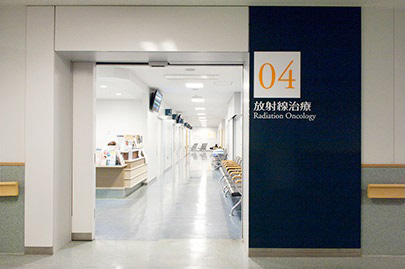

Consultation
We will examine you and consider the most appropriate treatment method based on the type, location, and progression of the disease, as well as the results of previous tests. We will also consider whether radiation therapy is the most suitable option and determine the best treatment method.
We will explain the expected effects and potential side effects of the treatment. If you wish to proceed, we will create a personalized treatment plan tailored to your specific needs. If you have any questions, please feel free to ask until you are satisfied.
Since radiation therapy requires specialized knowledge, patients may not be familiar with all the details. Please feel free to ask us any questions.

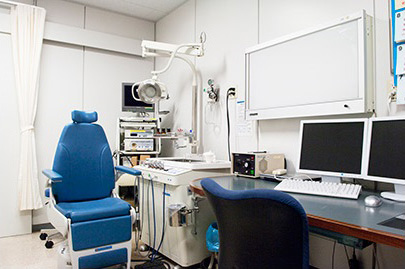
Treatment planning CT scan
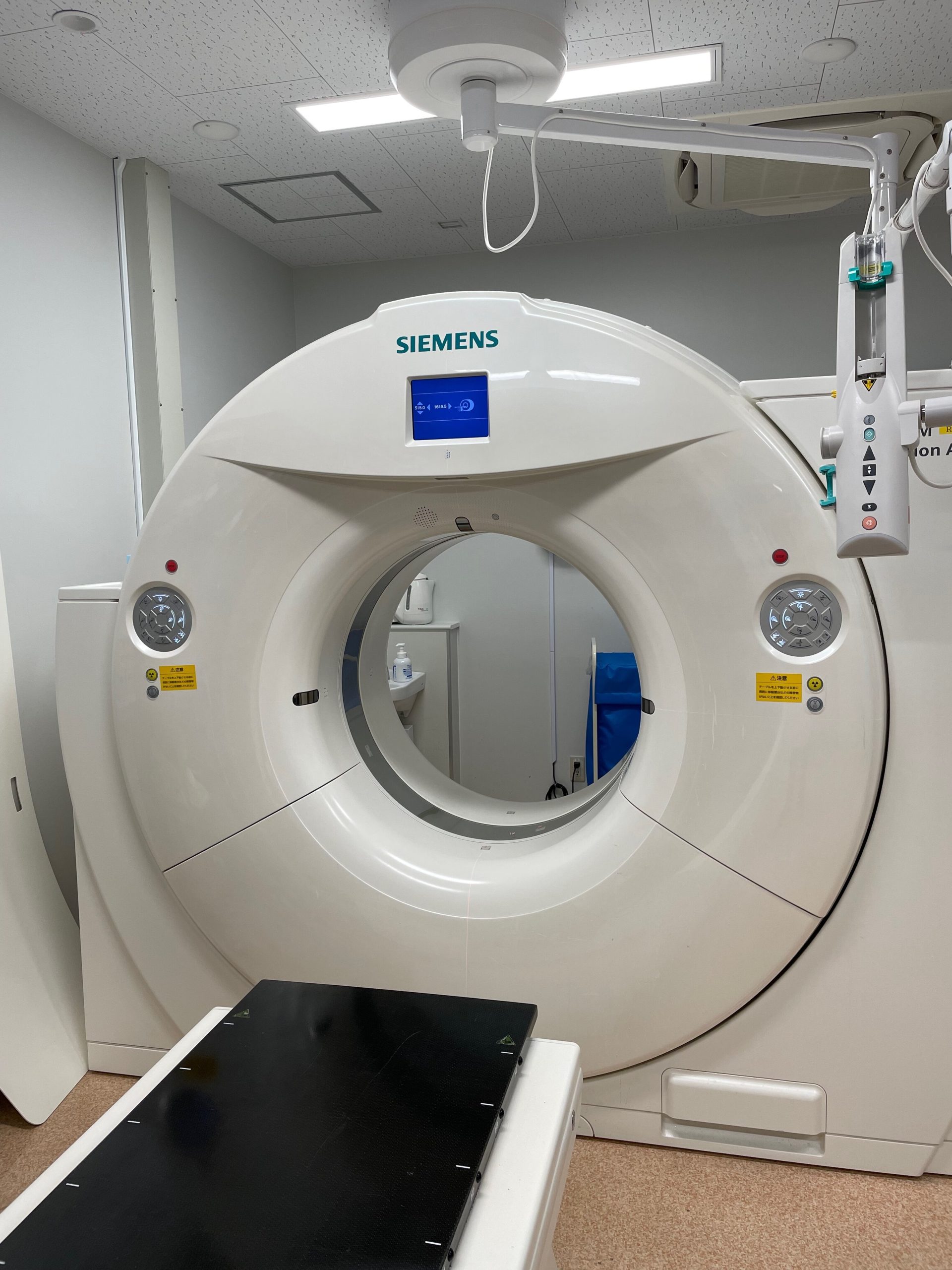
After you have agreed to undergo radiation therapy, we will decide on the most appropriate radiation therapy method. Just as in actual treatment, we will determine which areas to target and make temporary marks on your skin to ensure accurate positioning. This process is called a simulation.
When placing the mark, we check the position using fluoroscopy and take an X-ray. After that, we take a CT scan. This is necessary to calculate the amount of radiation to apply and the amount to be administered to the diseased and normal parts of the body.
The entire marking process takes approximately 20 to 30 minutes.
Treatment
Generally, treatment begins two days after the treatment plan is made.
Treatment is administered daily according to a treatment plan. Treatment time per day is approximately 5 to 10 minutes (It may take longer if multiple treatment areas are treated).
Typically, treatments are given five times a week, Monday through Friday, for several weeks.
Radiation will be administered according to the marks made during treatment planning; therefore, please do not erase these marks.
You will be examined during treatment; please consult with us immediately if you have any questions or concerns.
Treatment can sometimes be done on an outpatient basis. Hospitalization is required immediately after surgery, when IV treatment is used in conjunction with other therapies, when side effects from treatment are severe, or when commuting to the hospital is not possible due to distance or other factors. Currently, approximately 60% of patients undergoing treatment are treated as outpatients.
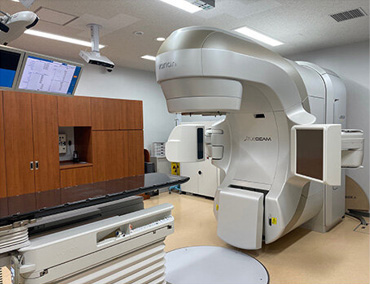
Treatment Room ①
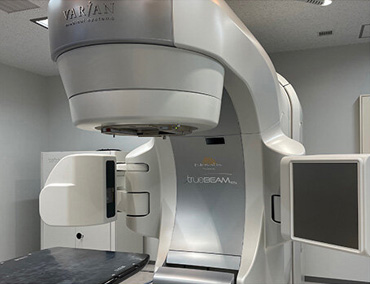
Treatment Room ②
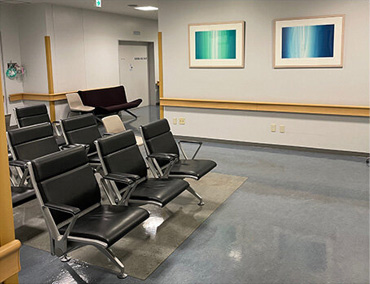
Waiting Room for Radiation Therapy
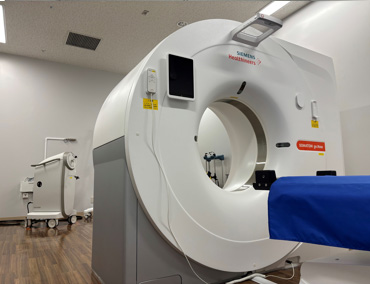
Brachytherapy Room (RALS system and CT in the same room)
Follow-up visit
You will continue to have regular check-ups after your radiation treatment is completed.
If necessary, various tests will be conducted to evaluate the effectiveness of the treatment.
We are also investigating and addressing side effects.
Generally, we schedule appointments on the same day as your original appointment with the department. In our department, appointments can be changed by phone. If you visit the hospital without an appointment, you will have to wait longer to make arrangements. Please don't hesitate to contact us in advance to avoid this delay.
Doctor List
Department Head: Sugawara Akitomo
Clinical department URL: https://www.fuzoku-hosp.tokai.ac.jp/service/housha/
http://radoncology-pub.ro.u-tokai.ac.jp/
Outpatient: 0463 (93) 1121 extension 6641 (outpatient reception)
Professor Akitomo Sugawara
| Specialization | Radiation Oncology |
|---|---|
| Specialist | Radiation Oncologist |
| Specialized Areas | Prostate cancer, high-precision radiation therapy |
| Outpatient medical day | Tuesday, Wednesday, Friday |
Lecturer Tsuyoshi Fukuzawa
| Specialization | Radiation Oncology |
|---|---|
| Specialist | Radiation Oncologist |
| Specialized Areas | Head and neck tumors, esophageal cancer, lung cancer, mediastinal tumors, palliative radiation |
| Outpatient medical day | Monday, Thursday, Friday, Saturday |
Lecturer Toshihisa Kuroki
| Specialization | Radiation Oncology |
|---|---|
| Specialist | Radiation Oncologist |
| Specialized Areas | Lung cancer, brain tumor, prostate cancer |
| Outpatient medical day | Tuesday, Thursday, Friday, Saturday |
Assistant Professor Tatsuya Mikami
| Specialization | Radiation Oncology |
|---|---|
| Specialist | Radiologist |
| Specialized Areas | Breast cancer, prostate cancer |
| Outpatient medical day | Monday, Wednesday, Thursday, Saturday |
Assistant Professor Yuri Toyoda
| Specialization | Radiation Oncology |
|---|---|
| Specialized Areas | Malignant tumors in various areas |
| Outpatient medical day | Monday, Tuesday, Wednesday, Saturday |
Koichi Fukumoto, Clinical Assistant
| Specialization | Radiation Oncology |
|---|---|
| Specialized Areas | Malignant tumors in various areas |
| Outpatient medical day | Wednesday, Thursday, Friday, Saturday |


